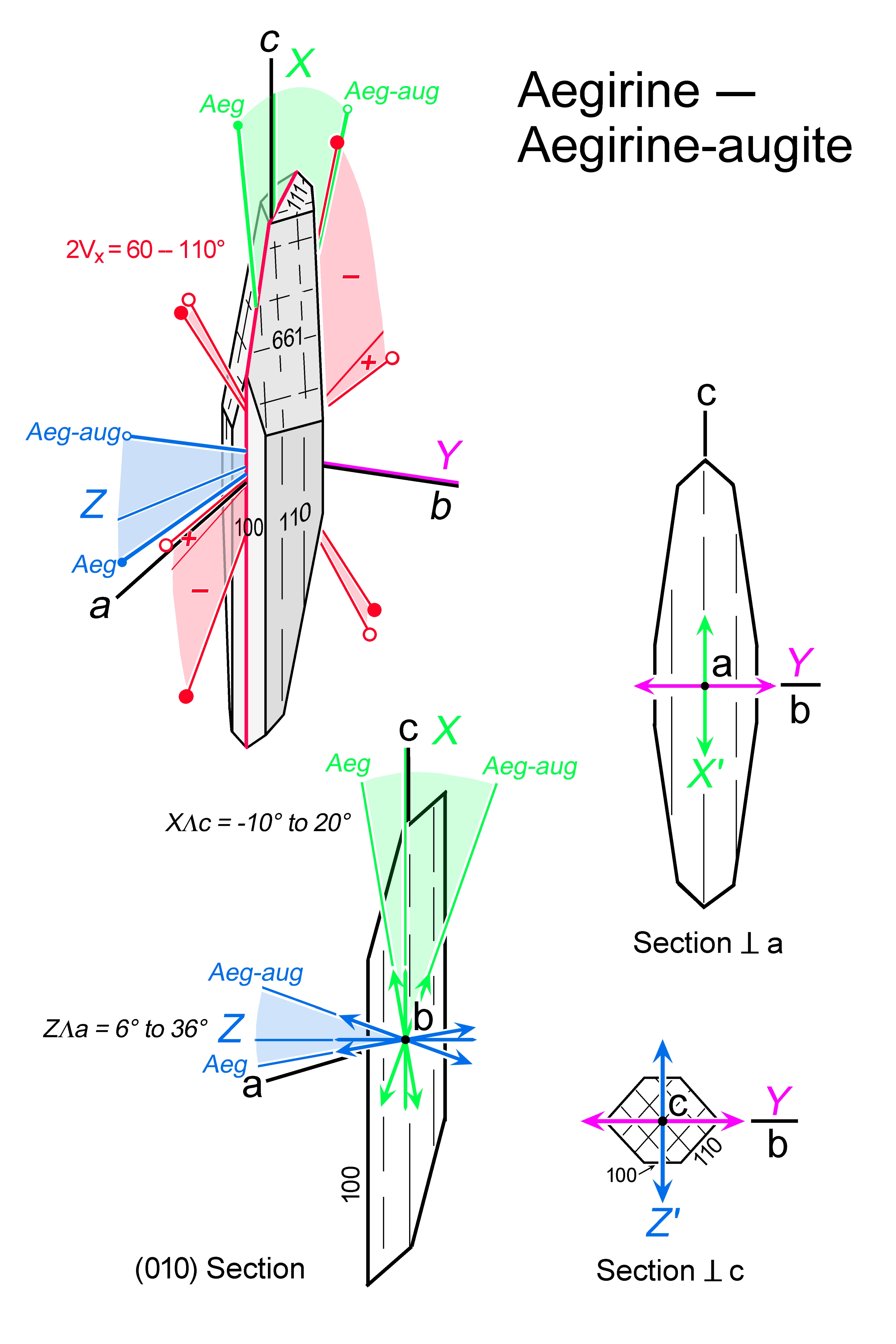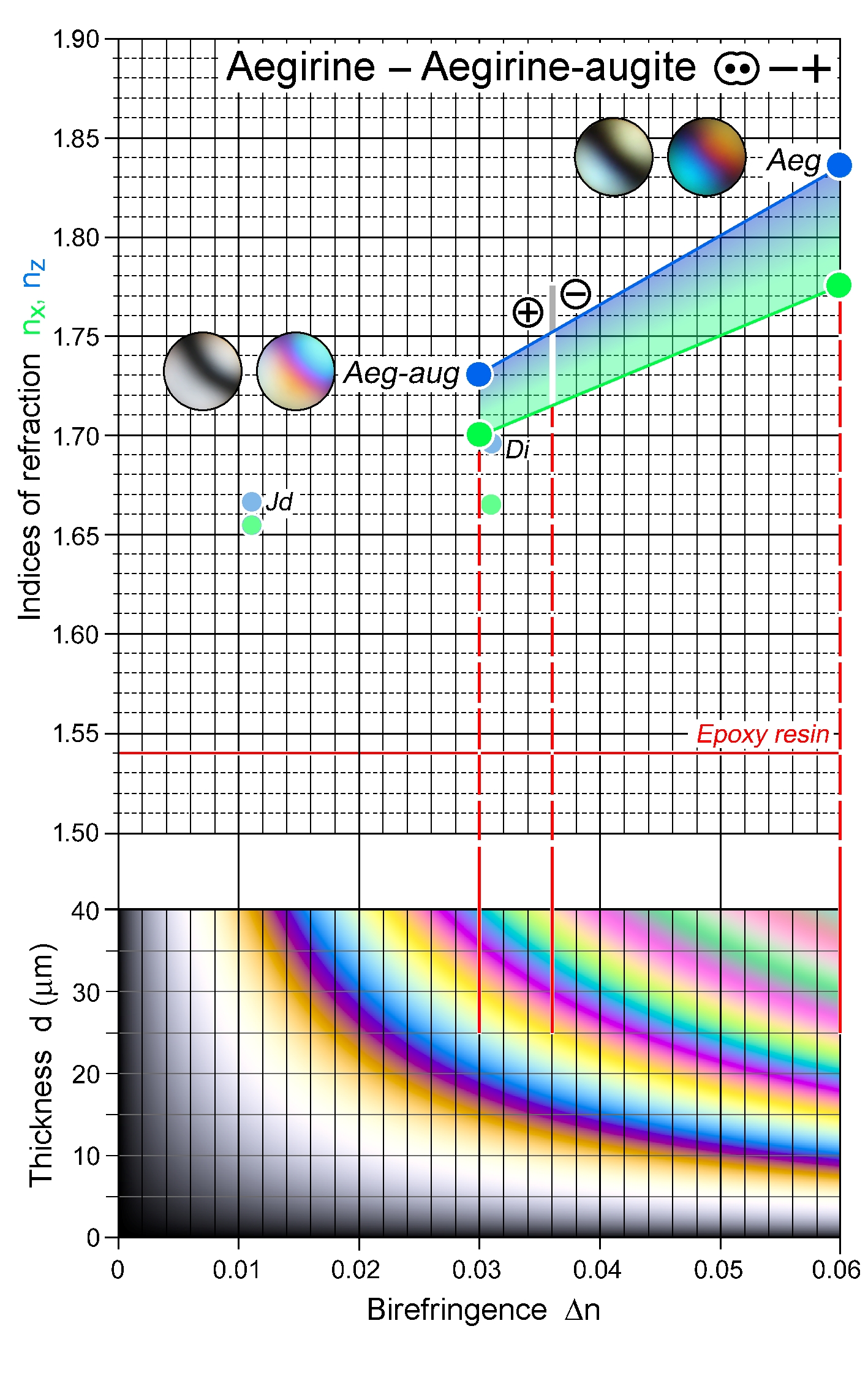|
| Formula | NaFe3+Si2O6 - (Na,Ca)(Fe3+,Fe2+,Mg,Al)Si2O6 |
| | Optic class & sign | Biaxial positive or negative |
| | Optical orientation | a near Z, b = Y, c near X |
| | Optical plane | (010) |
| | Relief | High |
| | Refractive indices | nx = 1.700 -1.776
|
|
ny = 1.710 -1.820
|
|
nz = 1.730 -1.836
|
|
| n increases with increasing Aeg component |
| | Birefringence (max.) | 0.030 - 0.060 |
| | | Δn increases with increasing Aeg component. Interference colours may be masked by mineral colour. Low-birefringent sections may show anomalous interference colours due to strong dispersion. |
| | Optic Angle
| 2Vx
= 60 - 90° |
| | 2Vz
= 90 - 70° |
| | Sign of elongation | Length-fast, l (-) |
| | Interference figure | High 2V isogyres, multiple isochromes. Optic axis dispersion moderate to strong |
| | Colour / pleochroism | Bright or dark green to yellow-green, or brown to yellow pleochroic. Absorption X > Y > Z. Colour and pleochroism decrease towards augite composition.
Colour zoning is common.
|
| | Zoning | |
|
|
| Form | Habit | Short- to long-prismatic; also acicular. Eight- to six-sided sections ⊥ c |
| | | Surface | Anhedral to euhedral |
| | Cleavage | 2 sets {110} distinct, at 93 and 87° (seen in sections ⊥ c); parting on {100} may occur. In prismatic sections, the traces of the two principal cleavage sets are parallel. |
| | Twinning | Simple or multiple on {100} |
| | Extinction | Inclined, c Ʌ X = 0 - 20° |
|
|
| Reaction textures | Metamorphic overgrowths on magmatic Ca-pyroxene |
| | Alteration / decomposition | Amphibole, chlorite, epidote |
|
|
| Occurence | Ign | Alkaline igneous rocks: alkali granite, syenite, nepheline syenite; less common in alkaline volcanic rocks; carbonatites |
| | | Met | Blueschists; acmite in Fe-rich metasedimentary rocks |
| | | Sed | |
| | | Hyd | |
| | | Other | |
|
|
| Distinctive properties | High n and Δn, small extinction angle (in contrast to other common pyroxenes) in maximum birefringence sections, characteristic pyroxene cleavage observed in sections ⊥ c; colour and pleochroism are much more intense than in most other pyroxenes. |
| | Additional comments | Change of optic sign occurs around 40 - 45% aegirine component. 2V increases from 2Vx = 60° (aegirine) to 90° within the aegirine-augite field, then decreases to 2Vz = 70° towards augite. Compositional zoning from igneous crystallization ranges from augite (core) to aegirine/acmite. |
|
|

 Images
Images 


 Images
Images 
